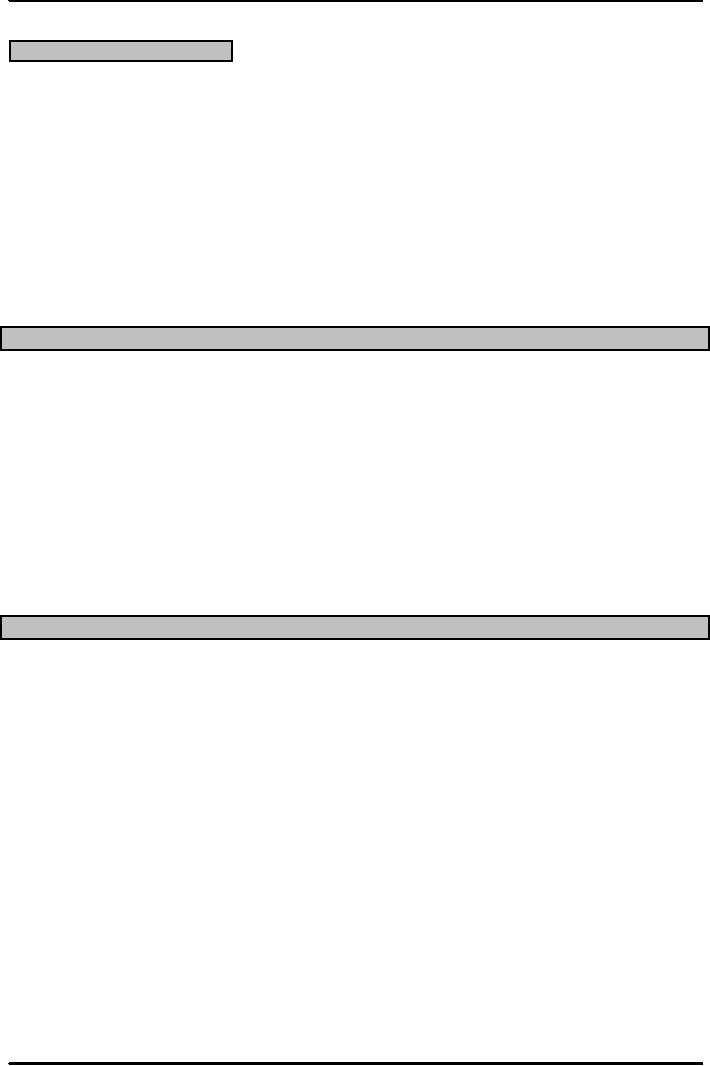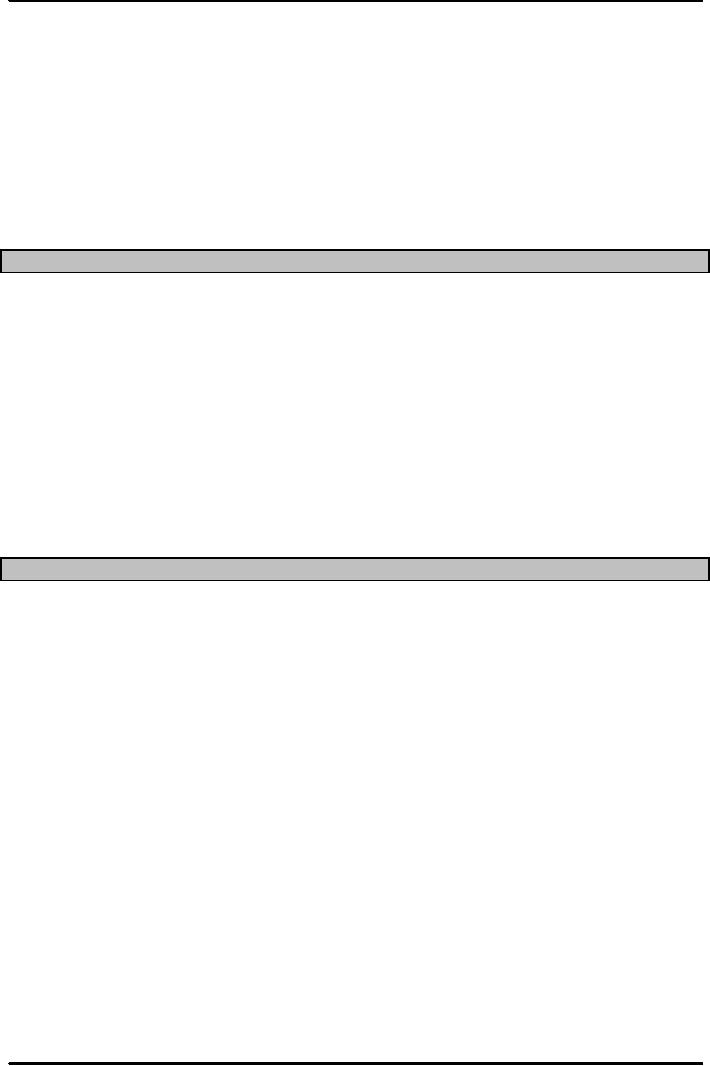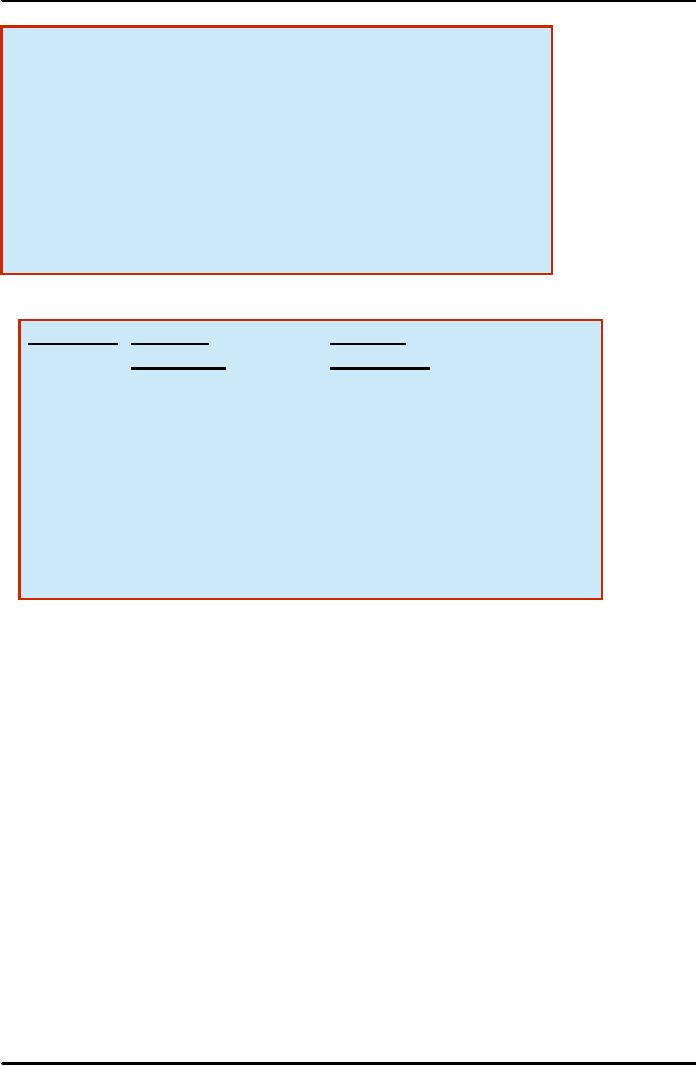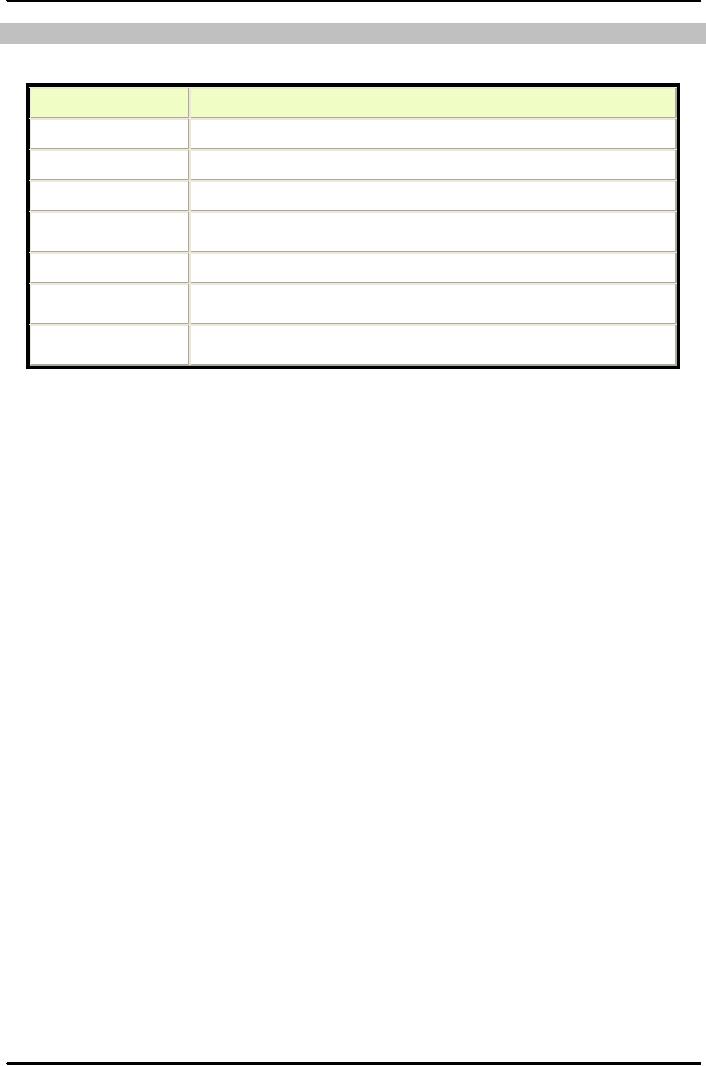 |

Production
and Operations Management
MGT613
VU
Lesson
23
MANAGEMENT OF
QUALITY
After
completing the lecture on Management of
Quality, the POMA students
should be able to
understand
the term quality and the importance of
Quality. The student should be
able to learn the
Determinants
of Quality, when they
discuss Total Quality
management also they should
be able to
identify
the various costs associated
with Quality. The students
should also be able to
appreciate the
famous
ISO 9000 and ISO
14000 quality systems, which
are also actively seen in
Pakistan. And last
but
not
the least out of curiosity than
academic interest the students
should be aware of philosophies
of
Quality
Gurus.
Introduction
Quality
Management can be understood only if we
are able to understand the term quality,
which is
defined
as
Quality
is
the ability of a product or service to
consistently meet or exceed
customer expectations.
Quality
as determinant of Revenue has been
often neglected, people tend to
associate quality with
high
price
of the product or item they
want to purchase, historically speaking
this is an incorrect
statement.
The
debate between American and Japanese
philosophy proves that quality is
offered free of cost and
is
the
prime source of revenue or
profit.
When
the American industry in 70s
and 80s talked about
cost cutting and productivity
improvement
they
did not paid heed to
Quality Management, which
was the "Holy Grail"
for the Japanese
Industry.
When
Japanese manufacturers entered and occupied the
American Markets the only
thing that made
their
products and services better
than the Americans was the
concept of Quality, which
led to
increase
in the revenues and productivity of
Japanese manufacturers.
Evolution
of Quality Management
1.
Prior to Industrial Revolution, the
skilled craftsman performed
all stages of production.
Pride in
workmanship
and reputation often formed the
basis of producing a quality
well. One or small
group
of
workers was responsible for the
entire product. After
industrial revolution and
specialization and
division
of labour each worker was
then responsible for small
portion of work. This led to
loss in
pride
of workmanship and failure to produce
quality products.
2.
Frederick
Winslow Taylor the father of
scientific management brought back the
concept of quality
by
incorporating product inspection as
well as focusing on the importance of
manufacturing
management.
3.
G.S.
Radford introduced the concept of
quality in the product design stage and
linked high quality
with
increased productivity and lower
costs.
4.
1924
W. Shewhart of Bell Technologies
introduced the Statistical process
control charts.
5.
1930
H.F.Dodge and H.G.Romig also of
Bell Technologies introduced
Tables for acceptance
sampling.
6.
1940's
- Universities, Bell Technologies and US
Army were using Statistical
sampling techniques
for
training engineers. American Society
for Quality Control aka ASQC
( now ASQ) was
formed
during
the same era
7.
1950's
- Quality assurance/TQC (The
era of Deming, Juran and Feigenbaum)
which changed the
concepts
of quality for ever.
102

Production
and Operations Management
MGT613
VU
8.
1960's - Zero defects championed by
Quality Guru Phillip Crosby.
It produced the perfect missile
for
US army
9.
1970's - Quality assurance in
services like health care,
banking and travel
industry.
10.
Late 1970s the quality
assurance concept changed to Strategic
quality approach, Harvard
Professor
David
Garvin advocated preventing mistakes
from occurring all
together.
Quality
Assurance vs. Strategic
Approach
Strategic
Approach is the SUPERLATIVE form of
Quality Assurance
Quality
Assurance places emphasis on
finding and correcting
defects before
reaching
market
Strategic
Approach is Proactive, focusing on
preventing mistakes from
occurring and places
greater
emphasis on customer
satisfaction
Quality
Guru
The
Quality Gurus are given more
respect and recognized as
Key Contributors to Quality
Management.
Presented
below is their contributions in a
nut shell, students should
learn to recognize
these
1.
Walter Shewhart is also known as
"Father of statistical quality
control"
2.
W. Edwards Deming presented 14 points
for quality management which
focused primarily on
common
cause of variation.
3.
Joseph M. Juran is famous for
his concept of "Quality is the fitness
for use".
4.
Armand Feigenbaum said, "Quality is a
total field or total
function".
5.
Philip B. Crosby is famous
for his philosophy that
"Quality is free".
6.
Kaoru Ishikawa- presented the
"fish bone diagram" or "cause
effect diagram".
7.
Genichi Taguchi robust design
for designing products insensitive to
change in environment.
Taguchi's
contribution was, "Taguchi
loss function".
Dimensions
of Quality
The
concepts of dimensions of quality
represent the fact that
customers value a product
keeping in
mind
different dimensions. Quality and Operations
Managers come across
customer perceptions
relating
to demand for durable,
reliable, performance to a standard and
that too in away that
is
aesthetically
correct.
1.
Performance
-
main characteristics of the
product/service
2.
Aesthetics
-
appearance, feel, smell,
taste
3.
Special
Features -
extra characteristics
4.
Conformance
-
how well product/service conforms to
customer's expectations
5.
Reliability
-
consistency of performance
6.
Durability
-
useful life of the
product/service
7.
Perceived
Quality - indirect
evaluation of quality (e.g.
reputation)
8.
Serviceability
- service after
sale
103

Production
and Operations Management
MGT613
VU
Examples
of Quality Dimensions
Dimension
(Product)
(Service)
Automobile
Auto
Repair
1.
Performance
Everything
works, fit &
All
work done, at agreed
finish
price
Ride,
handling, grade of
Friendliness,
courtesy,
materials
used
Competency,
quickness
2.
Aesthetics
Interior
design, soft touch
Clean
work/waiting area
3.
Special features Gauge/control
placement Location, call
when ready
Cellular
phone, CD
Computer
diagnostics
player
Examples
of Quality Dimensions (Cont'd)
Dimension
(Product)
(Service)
Automobile
Auto
Repair
5.
Reliability
Infrequency
of breakdowns
Work
done correctly,
ready
when promised
6.
Durability
Useful
life in miles, resistance
Work
holds up over
to
rust & corrosion
time
7.
Perceived
Top-rated
car
Award-winning
service
quality
department
8.
Handling
of complaints and/or Handling of
complaints
Serviceability
requests
for information
Service
Quality
Tangibles
Convenience
Reliability
Responsiveness
Time
Assurance
Courtesy
104

Production
and Operations Management
MGT613
VU
Examples
of Service Quality
Dimension
Examples
1.
Tangibles
Were
the facilities clean, personnel
neat?
2.
Convenience
Was
the service center conveniently
located?
3.
Reliability
Was
the problem fixed?
4.
Responsiveness
Were
customer service personnel willing and
able to answer
questions?
5.
Time
How
long did the customer
wait?
6.
Assurance
Did
the customer service personnel seem
knowledgeable about the
repair?
7.
Courtesy
Were
customer service personnel and the cashier
friendly and courteous?
105
Table of Contents:
- INTRODUCTION TO PRODUCTION AND OPERATIONS MANAGEMENT
- INTRODUCTION TO PRODUCTION AND OPERATIONS MANAGEMENT:Decision Making
- INTRODUCTION TO PRODUCTION AND OPERATIONS MANAGEMENT:Strategy
- INTRODUCTION TO PRODUCTION AND OPERATIONS MANAGEMENT:Service Delivery System
- INTRODUCTION TO PRODUCTION AND OPERATIONS MANAGEMENT:Productivity
- INTRODUCTION TO PRODUCTION AND OPERATIONS MANAGEMENT:The Decision Process
- INTRODUCTION TO PRODUCTION AND OPERATIONS MANAGEMENT:Demand Management
- Roadmap to the Lecture:Fundamental Types of Forecasts, Finer Classification of Forecasts
- Time Series Forecasts:Techniques for Averaging, Simple Moving Average Solution
- The formula for the moving average is:Exponential Smoothing Model, Common Nonlinear Trends
- The formula for the moving average is:Major factors in design strategy
- The formula for the moving average is:Standardization, Mass Customization
- The formula for the moving average is:DESIGN STRATEGIES
- The formula for the moving average is:Measuring Reliability, AVAILABILITY
- The formula for the moving average is:Learning Objectives, Capacity Planning
- The formula for the moving average is:Efficiency and Utilization, Evaluating Alternatives
- The formula for the moving average is:Evaluating Alternatives, Financial Analysis
- PROCESS SELECTION:Types of Operation, Intermittent Processing
- PROCESS SELECTION:Basic Layout Types, Advantages of Product Layout
- PROCESS SELECTION:Cellular Layouts, Facilities Layouts, Importance of Layout Decisions
- DESIGN OF WORK SYSTEMS:Job Design, Specialization, Methods Analysis
- LOCATION PLANNING AND ANALYSIS:MANAGING GLOBAL OPERATIONS, Regional Factors
- MANAGEMENT OF QUALITY:Dimensions of Quality, Examples of Service Quality
- SERVICE QUALITY:Moments of Truth, Perceived Service Quality, Service Gap Analysis
- TOTAL QUALITY MANAGEMENT:Determinants of Quality, Responsibility for Quality
- TQM QUALITY:Six Sigma Team, PROCESS IMPROVEMENT
- QUALITY CONTROL & QUALITY ASSURANCE:INSPECTION, Control Chart
- ACCEPTANCE SAMPLING:CHOOSING A PLAN, CONSUMER’S AND PRODUCER’S RISK
- AGGREGATE PLANNING:Demand and Capacity Options
- AGGREGATE PLANNING:Aggregate Planning Relationships, Master Scheduling
- INVENTORY MANAGEMENT:Objective of Inventory Control, Inventory Counting Systems
- INVENTORY MANAGEMENT:ABC Classification System, Cycle Counting
- INVENTORY MANAGEMENT:Economic Production Quantity Assumptions
- INVENTORY MANAGEMENT:Independent and Dependent Demand
- INVENTORY MANAGEMENT:Capacity Planning, Manufacturing Resource Planning
- JUST IN TIME PRODUCTION SYSTEMS:Organizational and Operational Strategies
- JUST IN TIME PRODUCTION SYSTEMS:Operational Benefits, Kanban Formula
- JUST IN TIME PRODUCTION SYSTEMS:Secondary Goals, Tiered Supplier Network
- SUPPLY CHAIN MANAGEMENT:Logistics, Distribution Requirements Planning
- SUPPLY CHAIN MANAGEMENT:Supply Chain Benefits and Drawbacks
- SCHEDULING:High-Volume Systems, Load Chart, Hungarian Method
- SEQUENCING:Assumptions to Priority Rules, Scheduling Service Operations
- PROJECT MANAGEMENT:Project Life Cycle, Work Breakdown Structure
- PROJECT MANAGEMENT:Computing Algorithm, Project Crashing, Risk Management
- Waiting Lines:Queuing Analysis, System Characteristics, Priority Model